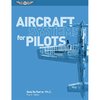Dan Thomas
Touchdown! Greaser!
- Joined
- Jun 16, 2008
- Messages
- 11,365
- Display Name
Display name:
Dan Thomas
If that was true, the engine would fail anytime any significant changes were made in throttle setting. The combustible air:fuel mixtures range from 8:1 (rich) to 18:1 (lean). Varying fuel flow by the square would really mess that up.In a carburetor, air passes through a venturi, creating a vacuum which draws fuel into the air. The throttle is regulating this flow, hence indirectly regulating the amount of vacuum and thereby how much fuel is drawn in. Thus the mixture does change with throttle position and sorta/kinda works okay.
The fuel has viscosity, and it has to pass through channels and the main metering jet as well as the mixture control valve. All that drag ALSO increases by the square of its velocity, and that has the effect of levelling off the fuel flow rise, making it more more parallel with the airflow. It's not exponential at all. If it was, we'd see massive EGT deviations with even small throttle movements.
In this diagram, the "power jet" is referring to the main metering jet.






